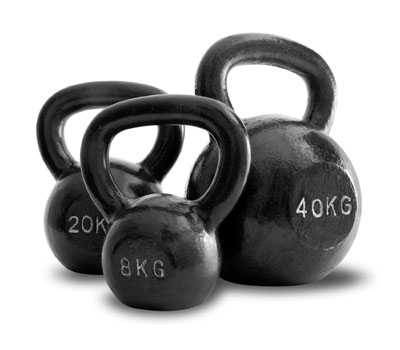Tips for Increasing the Kettlebell Weight

In each kettlebell functional training session; with just one single instrument, your clients can get all the benefits of a full-body workout that combines cardio, strength training and flexibility moves. Kettlebell training is also excellent for burning fat and toning the body uniformly from head to toe.
However, the kettlebell is also a complex instrument with an off-balance weight that is difficult to control. It is important to learn during your functional training certifications courses on how to progress to heavier weights in a planned manner so that your clients can train safely and effectively.
In order to increase kettlebell weights safely, functional fitness courses emphasize that you should keep in mind two things; being consistent and progression in a planned manner.
Being Consistent
As a trainer, the onus lies on you to ensure that all your clients are consistent and turn up for each and every session. By being inconsistent, clients will never be able to reach the level of strength, stamina and flexibility required to increase kettlebell weights gradually.
Regular attendance also ensures that clients learn to perfect their form and technique so that they can handle heavier weights comfortably and safely.
Progression in a Planned Manner
Functional training certifications teach you how to progress to heavier weights in a planned manner so that they get enough time to adapt to the challenges of maneuvering heavier kettlebells.
There are several ways you can plan your clients’ progression in a planned manner so that you can easily handle heavier weights as they move on.
Firstly, you can gradually increase the repetition and duration of a particular exercise.
This is the simplest and easiest way to acclimatize your clients to heavier weights. With each session, just keep increasing the number of reps for a particular workout. For example, if a client is doing 10 reps of kettlebell swing on the first day, make him do 12 reps on the second day, 14 reps on the third day and so on.
Alternately, you can also increase the duration. So a client is doing swings for 20 seconds the first day, make her do it for 35 seconds the next day, followed by 45 seconds and so on.
You can also combine the two approaches for clients who are fit enough and can handle such quick progression without getting fatigued.
Secondly, you may reduce the duration of rest between workouts. Rest periods between workouts are vital for the body to recover before starting a new workout. Without proper rest, muscle degeneration may set in.
However, once your client has enough stamina and is comfortable with a particular weight; you may gradually reduce the rest period and increase the kettlebell weight so that clients don’t reach a fitness plateau.
Thirdly, you can introduce more challenging versions of workouts your clients are used to doing. This can be considered as the final step and should be applied only on clients who have become experts in kettlebell form and technique.
There are several kettlebell workouts that are quite complex and require you to lift quite heave weights. Clients who having been working with kettlebells for several months; can use heavier weights so as to derive maximum benefit from their workouts.


